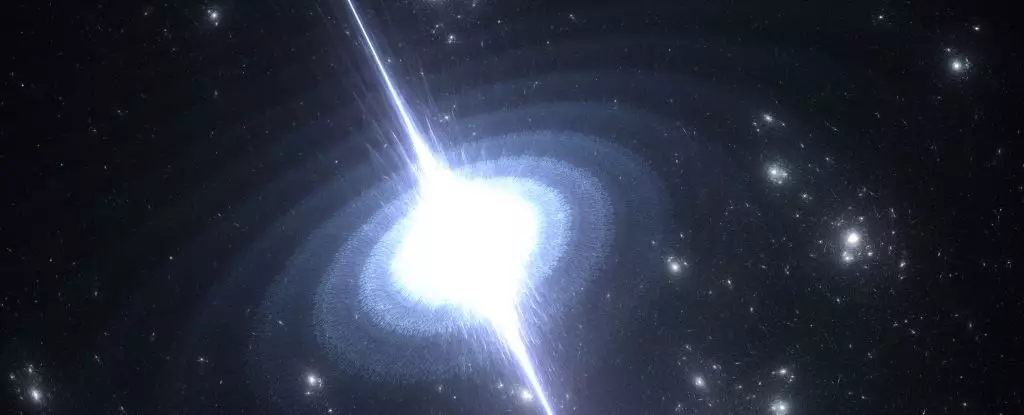Astrophysics is a realm that continually challenges our understanding of the universe, with neutron stars emerging as potential beacons in the search for one of the most intriguing particles—axions. These hypothetical elementary particles, posited in the 1970s, promise the potential to resolve some of the darkest enigmas of modern cosmology, particularly the nature of dark matter. Understanding the characteristics and behaviors of axions could shift paradigms and enhance our comprehension of the universe’s fabric.
At the heart of the axion’s significance is its predicted ability to mimic dark matter, contributing to the unexplained gravitational effects observed in galaxies and clusters. Like the elusive neutrinos, axions are anticipated to interact feebly with other forms of matter, which complicates their detection. However, the theory suggests that under specific conditions, particularly involving strong magnetic fields, axions may decay into two photons—a process that could theoretically make them observable. This decay, when coupled with the intense magnetic fields from spinning neutron stars, could result in detectable cosmic signals.
The mass range of axions, while still uncertain, is crucial for their roles in particle physics and cosmology. If axions occupy the right mass window, their gravitational effects could provide insights into the universe’s composition, helping solve the mystery regarding the dominant forms of matter and energy in existence.
Neutron stars are the remnants of supernova explosions, characterized by extraordinarily dense cores, which cause the atoms within them to be packed tightly, behaving like a singular atomic nucleus. This extreme density results in magnetic fields that are unfathomably more powerful than Earth’s. Neutron stars can rotate rapidly, and those that do are termed pulsars. The spinning motion generates beams of radiation, allowing these stars to emit powerful radio waves like cosmic lighthouses, guiding astronomers in various stellar studies.
The connection between pulsars and axions resides in the stars’ ability to potentially trap axions in their intense gravitational fields. As axions accumulate over millions of years, their presence could result in a faint veil around the neutron star, leading to observable cosmic phenomena, if they exist in significant quantities.
Research into the presence of axion clouds surrounding pulsars is ongoing, with recent studies indicating that while direct detection remains elusive, constraints on their possible masses are tightening. The failure to find any definitive signals doesn’t discount the possibility of axions; rather, it necessitates a reevaluation of their properties and the conditions under which they might manifest.
Astrophysicists have proposed two main avenues for identifying these axion signatures. One is a continuous radio signal corresponding to the mass of the axions—a subtle indicator that could refine our understanding of these particles. The second, albeit less immediately observable, is a burst of radiation that might occur at the end of a neutron star’s life cycle. While this process is forecast to take trillions of years, the search for the continuous signal provides a more actionable path for ongoing studies.
The evidence gathered so far points to the necessity of further exploration. The absence of detectable signals thus far has led to refined mass constraints for axions, laying the groundwork for future endeavors.
The journey to identify axions is far from complete, and while attempts thus far have yielded constraints on their properties, the lack of detection urges the scientific community toward innovative methodologies. Future research may focus on utilizing advanced telescopes and observational technologies that can probe deeper into the radio spectrum for any faint signals that could hint at the presence of axions.
The potential confirmation of axions would not only provide clarity surrounding dark matter but might also illuminate additional aspects of particle physics that remain shrouded in mystery. Addressing questions about the universe’s mass composition, the behavior of forces at the quantum level, and the overall structure of reality are pivotal for the future of cosmology.
The hunt for axions remains one of the most compelling narratives within modern astrophysics. As we continue to investigate the phenomena surrounding neutron stars and their potential axion clouds, we edge closer to unraveling one of the universe’s biggest secrets—a quest that offers the promise of both scientific advancement and fundamental understanding of the cosmos.


Leave a Reply